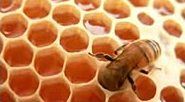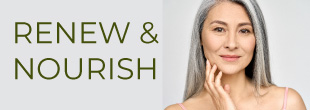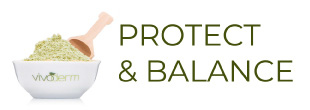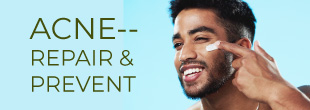 A contributing factor to dry, flaky, skin in winter is a drop in temperature. Although winter sometimes feels damp, there is usually less water in the air than on your skin and that creates a moisture vapour loss from the skin. As skin becomes drier, its surface layer stops producing the natural lipids which prevent moisture loss, and water cannot be retained so easily. Dry skin will also show wrinkles more easlit and contribute to an aging appearance.
A contributing factor to dry, flaky, skin in winter is a drop in temperature. Although winter sometimes feels damp, there is usually less water in the air than on your skin and that creates a moisture vapour loss from the skin. As skin becomes drier, its surface layer stops producing the natural lipids which prevent moisture loss, and water cannot be retained so easily. Dry skin will also show wrinkles more easlit and contribute to an aging appearance.
Herbalist Greta Breedlove came up with this natural homemade skin care recipes face utilizing the seed of the avocado. It makes a moisturizing face scrub, especially for dry skin.
AVOCADO FACE SCRUB
Let an avocado dry a few days until you can remove the skin easily. Chop, then pulverize in a blender or food mill. Moisten with a little milk and smooth over your face, throat.
AVOCADO FACIAL CLEANSER
One egg yolk, beaten until light and frothy
1/2 cup milk
1/2 avacado, peeled and mashed
Beat the mixture with a fork until you have a thin cream or lotion consistency. Apply with cotton balls as you would a cleanser.
As a result of all these factors, sometimes skin on the face and body tends to be in worse condition in the winter months than at other times of the year. In extreme cases, a constant drying effect can even lead to cracking, flaking and redness.
These four tips for helping to keep dry skin at bay during the colder months come from Dr. Kucy Pon, Olay dermatologist.
1. A moisturizer is essential – A moisturizer performs several important functions, including replacing lost water. Water-binding ingredients, such as glycerin, help keep it in the skin.
2. Create an oasis – Put some moisture back into the air by using a humidifier in your home or office. It will counteract the drying effects of indoor heat.
3. Drink lots of water – Increase your body’s natural moisture level by staying hydrated throughout the day.
4. Keep wrapped up – Dress for the season and try to limit your skin’s exposure to harsh temperatures and damaging winds.
If you have dry skin, then you probably already know it can be really difficult to care for. When you don’t look after it properly, it can become flaky, and if it gets really bad, may even become irritated and red. Although it’s possible to find plenty of products that claim to be able to solve dry skin problems, unfortunately most of their claims are sales hype.
Although most over the counter products don’t do much to combat dry skin, there are a number of things you can do to improve the condition of your skin. It’s mostly a question of making some basic changes to your daily skincare routine. It won’t take long for your skin to appear more healthy and vibrant.
With dry skin, you have completely the opposite problem to someone with oily skin. Basically, your skin is suffering from a lack of sebum, the oil that helps to keep the skin moist and supple. People with oily skin produce far too much sebum. Sebum is actually made from skin cells, and is an essential ingredient in healthy, supple skin. Because dry skin has insufficient oil, you need to replace it from both inside and outside.
5. Moisturize
One of the best things you can do for your skin is to use a good quality moisturizer. Choose a cream that is rich, but not heavy. Consider choosing a natural cream with aloe vera and chamomile. Both these ingredients are very soothing, as well as helping to reduce dryness and improve the skin’s healing abilities.
6. Choose Healthy Foods
You also need to look at the type of foods you eat. It’s important to choose healthy foods, because the healthier your body, the healthier your skin will be. You may not realize this, but your skin is actually the largest organ of your body. So it needs to be nourished just like all the other organs in your body.
7. Supplement
Depending on the types of food you already eat, you might need to consider taking a supplement, such as Vitamin E, Omega-3 oils and B-Complex vitamins. Making sure you get enough of these important nutrients is a great way to improve the condition of your skin.
By nourishing your skin in all these ways, you should soon a marked reduction in the level of dryness. Helping your skin to be more supple and moist also helps to slow down the process of aging, so you’re the winner in two ways.
By Tom Turner
 Honey, is the ultimate natural product that is extremely beneficial for your skin. Whether it is milk and honey baths or face masks with honey, you can get the perfect radiance with this natural product. Dirt and pollution cause the skin to lose its ability to retain moisture. Hence, it looks dry and wrinkles appear. Honey’s antioxidant properties trap the moisture and refresh the skin and leave it soft and supple.
Honey, is the ultimate natural product that is extremely beneficial for your skin. Whether it is milk and honey baths or face masks with honey, you can get the perfect radiance with this natural product. Dirt and pollution cause the skin to lose its ability to retain moisture. Hence, it looks dry and wrinkles appear. Honey’s antioxidant properties trap the moisture and refresh the skin and leave it soft and supple.




 A contributing factor to dry, flaky, skin in winter is a drop in temperature. Although winter sometimes feels damp, there is usually less water in the air than on your skin and that creates a moisture vapour loss from the skin. As skin becomes drier, its surface layer stops producing the natural lipids which prevent moisture loss, and water cannot be retained so easily. Dry skin will also show wrinkles more easlit and contribute to an aging appearance.
A contributing factor to dry, flaky, skin in winter is a drop in temperature. Although winter sometimes feels damp, there is usually less water in the air than on your skin and that creates a moisture vapour loss from the skin. As skin becomes drier, its surface layer stops producing the natural lipids which prevent moisture loss, and water cannot be retained so easily. Dry skin will also show wrinkles more easlit and contribute to an aging appearance.